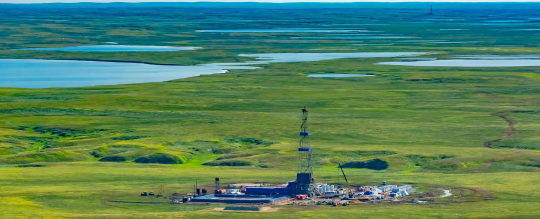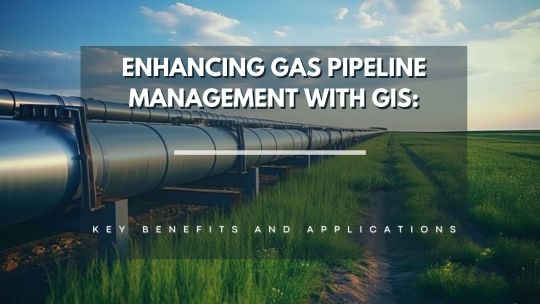#Oil and Gas Software
Explore tagged Tumblr posts
Text
#Oil and Gas Software#Oil and Gas Software Development Company#Oil and Gas Software Development#Exploration Software
0 notes
Text
Best Oil and Gas Construction Company, well construction Company
iDrilling Technologies (iDT), recognized as a reliable construction partner for the oil and gas, Well construction sector. We stand out as leading Oil and Gas Construction Company, well construction Company. Best as Engineering services, Drilling Construction Companies, well integrity, Reduce conventional footprint, Global networking, Risk matrix, ERD wells, well performance analysis, HPHT wells, Onshore wells, water wells, Deepwater wells Companies, Hydraulics and hole cleaning, Stuck pipe prevention, Casing design and material selection, Loss circulation management, Well barrier software, Hydraulics and hole cleaning software Companies. Visit https://idrillingtechnologies.com/

#Oil and Gas Construction Company#Well construction Company#Engineering services#Drilling Construction Companies#Well construction Companies#Well integrity Companies#Global networking Companies#Reduce conventional footprint Companies#Risk matrix Companies#Well performance analysis Companies#ERD wells Companies#HPHT wells Companies#Deepwater wells Companies#Onshore wells Companies#Shallow water wells Companies#Hydraulics and hole cleaning Companies#Casing design and material selection Companies#Stuck pipe prevention Companies#Loss circulation management Companies#Hydraulics and hole cleaning software Companies#Well barrier software Companies
3 notes
·
View notes
Text

ERP Software For Oil And Gas Industry
Sage X3 ERP software for oil and gas industry drives success by enabling streamlined operations and offering growth-oriented solutions.
0 notes
Text
Top Oil and Gas Production Software by EZTRAK Software in the USA
EZTRAK Software offers one of the leading oil and gas production software solutions in the USA, specifically designed to enhance operational efficiency, improve data management, and streamline processes for energy companies. The software is tailored to meet the complex needs of the oil and gas industry, providing real-time tracking, data integration, and detailed reporting capabilities.
One of the standout features of EZTRAK’s software is its robust production monitoring system. It enables companies to track production volumes, monitor well performance, and optimize output across multiple fields. The software captures critical data, including pressure, temperature, and flow rates, helping companies maintain operational efficiency while reducing the likelihood of costly equipment failures.
EZTRAK Software also excels in asset management, providing detailed records of equipment, maintenance schedules, and service history. This feature helps prevent downtime by ensuring that critical machinery is properly maintained and serviced on time. The software’s integrated approach ensures that all data is easily accessible, allowing operators and managers to make informed decisions based on real-time information.
In addition, EZTRAK offers advanced reporting tools, giving businesses the ability to generate detailed financial, production, and performance reports. These insights aid in compliance, performance optimization, and forecasting.
Overall, EZTRAK Software offers an integrated, scalable solution that helps oil and gas production companies optimize their operations, manage assets efficiently, and improve decision-making, making it one of the best software offerings in the industry.
1 note
·
View note
Text

Enhancing Gas Pipeline Management with GIS: Key Benefits and Applications
In the energy and utilities sector, gas pipeline management is complex, requiring precision, safety, and a clear strategy for both existing infrastructure and future expansion. Geographic Information Systems (GIS) have revolutionized pipeline management by providing a spatially accurate, data-rich view of assets. From asset management and leak detection to route planning and demand forecasting, GIS is becoming indispensable for gas companies. This blog delves into the ways GIS transforms gas pipeline management, delivering benefits across safety, efficiency, cost-saving, and planning.
#benefits of using gis for gas pipelines#ensuring gas pipeline safety with gis tools#gas network analysis#gas pipeline asset management#gas pipeline gis mapping services#gas pipeline leak detection using gis#gas pipeline management in gis#gas pipeline mapping software#gas pipeline monitoring tools#gas pipeline risk assessment#gis applications in energy sector#gis for gas pipeline monitoring#gis for infrastructure management#gis in oil and gas industry#gis pipeline maintenance software#gis pipeline monitoring system#gis pipeline route planning#gis software for gas pipeline route optimization#victoryofgoodoverevil#gis solutions for pipeline maintenance and monitoring#gis-based pipeline integrity management#pipeline data management#pipeline geographic information systems#pipeline management solutions#remote sensing for gas pipelines#spatial analysis for gas pipelines#spatial data for gas pipelines
0 notes
Text

ERP Oil And Gas
Sage X3 is the best ERP software for the oil and gas industry. It streamlines business processes and enables comprehensive reporting.
1 note
·
View note
Text
Software for Physical Metal Trading
Robosoft offers cutting-edge software solutions for physical metal trading, designed to streamline and optimize the entire trading process. Our platform enables traders to efficiently manage contracts, track market prices, monitor inventories, and handle logistics with real-time insights and data. With built-in risk management tools, automated reporting, and seamless integration with financial systems, Robosoft’s software empowers metal traders to make informed decisions and enhance operational efficiency. Whether you trade in precious metals or industrial commodities, our robust solution is tailored to meet the dynamic needs of the metal trading industry.
#ctrm oil and gas#ctrm agro#ctrm agro commodity trading#commodity trading software#ctrm software#trading software#CTRM software for grain#etrm software
0 notes
Text
Process Simulation Software in Oil and Gas Market size is projected to reach USD 2.21 Bn by end of 2030, at a CAGR of 4.3%.
0 notes
Text

Discover key strategies for maximizing ROI in the oil and gas industry using scalable software solutions. Learn how to enhance efficiency, reduce costs, and drive profitability with tailored software that adapts to your business needs.
Read the blog here - https://75way.com/blog/maximize-oil-gas-roi-with-scalable-software-in-uae
#web development#software development#oil industry#gas industry#software development company#dubai#UAE#oil company UAE
0 notes
Text
How does CMMS Software Facilitate Real-time Data Analysis and Reporting in Oil & Gas Maintenance?

Discover how CMMS software boosts maintenance in the oil & gas sector by providing real-time data analysis and detailed reporting for better decision-making.
0 notes
Text
Details Presentation Belltree Ltd
We are a global software provider with a supporting consultancy business within the Upstream Oil and Gas Industry. Our team consists of reservoir engineers, geologists and data scientists. For 15 years, we have been a trusted partner of government regulators, NOCs and IOCs to maximize asset performance and identify hidden reserves potential in a sustainable manner.
22A/4 Calton Road,Edinburgh UK,EH8 8DP
+44 (0)131 225 3796
#benchmarking software#carbon capture and storage software#oil and gas benchmarking data#oil and gas benchmarking software.
0 notes
Text
0 notes
Text

Oil And Gas ERP Software
Sage X3 ERP software for oil and gas industry drives success by enabling streamlined operations and offering growth-oriented solutions.
0 notes
Text

Efficiency and dependability are extremely important in the oil and gas sector. AntMyERP’s rental management software is developed to maximize efficiency by maintaining cutting-edge equipment. It boosts efficiency, simplifies asset tracking, and offers thorough inventory management. Our software streamlines service management and billing, ensuring a more effective and profitable rental business. Explore AntMYERP's oil and gas rental management software and take benefit for smooth leasing operation.
0 notes
Text

ERP Oil And Gas
Sage X3 is the best ERP software for the oil and gas industry. It streamlines business processes and enables comprehensive reporting.
0 notes